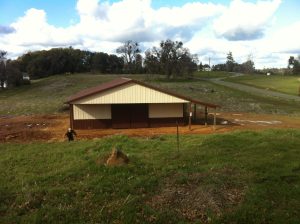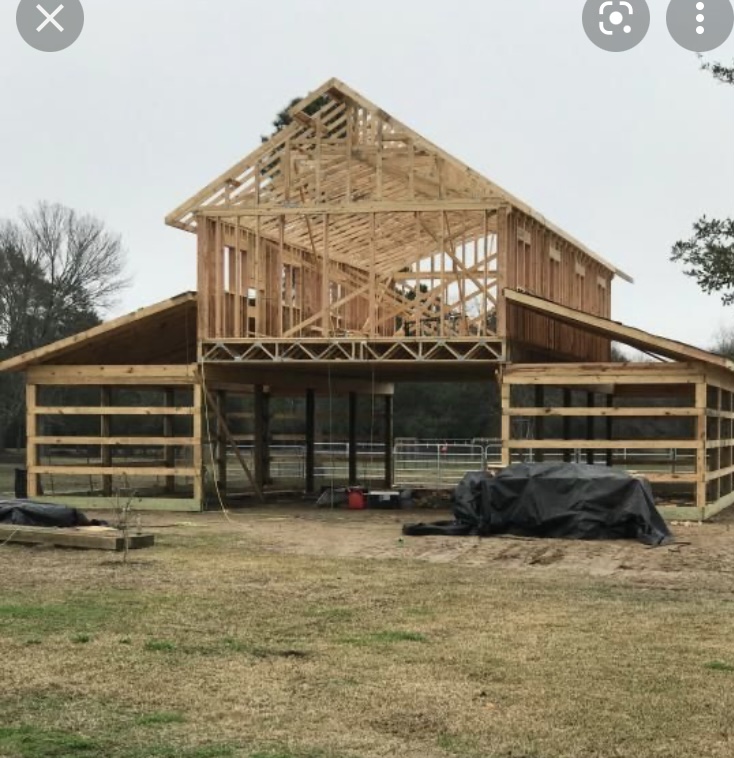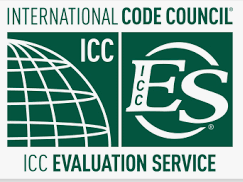While many old barns exist, it was not until the last century that pole barns developed, first as farm buildings. The following is excerpted from the National Frame Builder’s Association website: www.nfba.org:
 The post-frame industry has grown steadily in North America, gaining more and more widespread application in the past 100 years. Yet, many people still wonder, “What is post-frame construction?”
The post-frame industry has grown steadily in North America, gaining more and more widespread application in the past 100 years. Yet, many people still wonder, “What is post-frame construction?”
Post-frame buildings are structurally efficient buildings composed primarily of: trusses, purlins, girts, bracing and sheathing. The primary element of the design incorporates square posts or wood columns, which are typically embedded in the ground or surface-mounted to a concrete or masonry foundation.
The post-frame building concept is not new. Many pre-historic peoples throughout the world used posts embedded in the ground to fashion sturdy structures for residences and other uses. For centuries, buildings along shorelines and in low-lying areas have been built on poles to elevate the structures above the guideline and/or water hazard. In rural areas, poles were used to erect sheds or temporary structures in 19th-century America. In all these cases, the limited life-span of poles in contact with the ground made them unsuitable for use longer than a few years, except in very dry areas or when rot-resistant strains of wood were used.
However, two significant technological developments in the twentieth century allowed the post-frame building to develop into a viable, long-lived structural system. First, pressure-treated materials that provided excellent durability, particularly poles that were initially developed for the electrical industry, became available for the construction of buildings. Secondly, large, lightweight metal sheeting was produced that could span supports spaced several feet apart. What remained was for builders to optimally use the advantageous features of these two materials in what is now known as the post-frame or laminated column building.
The availability of pressure-treated wood permitted the replacement of a continuous concrete foundation in conventional buildings with a vertical structural member that carried the live roof and dead building loads directly to the ground below the frost line.
The availability of lightweight, formed, metal roofing material permitted the use of spaced roof decking. The strength of the roofing materials resulted in a significant portion of the lateral building loads being transmitted to the end walls, to reduce the load on the supporting posts. The availability of trusses for a wide variety of spans further enhances and aides in the development of the post-frame building. Whereas trusses in conventional light-frame buildings are generally spaced 2-ft. or less on-center on stud walls, trusses became readily available that permitted truss spacing of anywhere from 4 to 12 ft. in post-frame construction. Each of these features contributed to the evolution of the modern post-frame building and its increasing popularity.
Stay tuned for tomorrow’s Blog- Part Two of The History of Pole Buildings. You will find out who is really responsible for getting the pole barn design started, and why it was so important in the 1930’s.










More people need to start using renewable energy like this.
Please go ahead and add more content to the site, I love it!
WONDERFUL Post.thanks for share..more wait ..